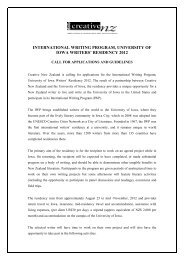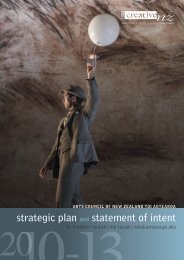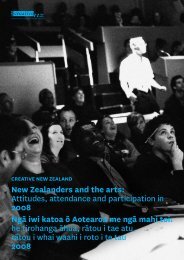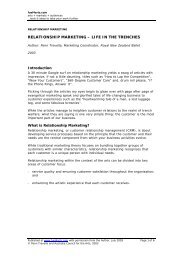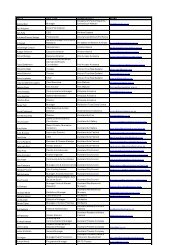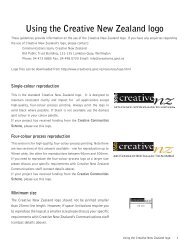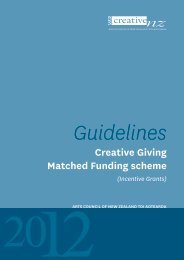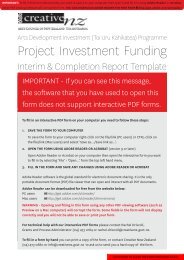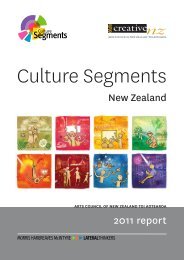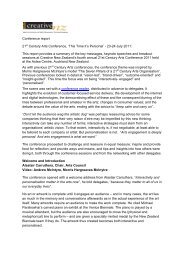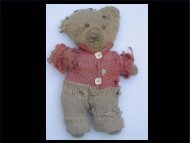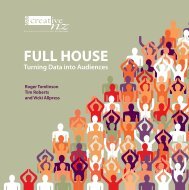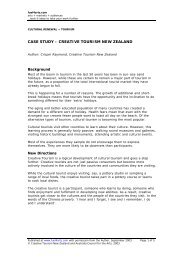Smart Arts - Creative New Zealand
Smart Arts - Creative New Zealand
Smart Arts - Creative New Zealand
- No tags were found...
Create successful ePaper yourself
Turn your PDF publications into a flip-book with our unique Google optimized e-Paper software.
THE EYESHAVE ITFaces and eyes have goodvisual impact: think aboutthe appeal of the MonaLisa, or the constant use offaces on magazine covers.Include a disclaimer if whoever or whatever you’re headlining in your promotion (e.g. aspecific artist) isn’t going to be available for all performances. Alternatively, reconsiderwhether to use this element to headline your promotion.For tours to multiple centres, you need to consider how best to convey informationabout multiple venues and dates. One option is to print all information for all centres onthe one poster or flyer. Alternatively, for a cleaner look, you can leave a space to add therelevant information for each centre by hand or by overprinting.Remember that your poster or flyer is a marketing tool. Good design should be bothattractive and functional.If there is a Mäori, Pacific or other cultural component to what you’re promoting, youshould consider how best to incorporate this into your publicity. For example: shouldyour material be bi-lingual?Briefing your designerGiving a design brief involves discussing the desired outcomes with the designer. As withall suppliers, get a quote and revise it if the job specifications change.When you’re briefing the designer, first describe your event. For each medium you wantthem to produce (e.g. flyer, poster, advertisements), discuss the audience you’retargeting, the messages you want to convey, and the look you want to achieve.Is your designer familiar with designing for your target audience? For example, if Mäoriare a target audience, what experience does the designer have with culturally appropriateuse of images and correct use of macrons?Discuss the amount of copy you’re likely to use for each medium and when you supply thecopy make sure there’s a hierarchy of headings and sub-headings, distinct from the generaltext. Also brief the designer on any elements that you want to take visual priority: e.g. aphoto, illustration or person’s name.Discuss what happens once the design work is ready to go to print. Do you need thedesigner to see the job through to the completion of the print process? Discuss the costsbefore deciding whether to handle the print process yourself. A designer will usuallycharge a fee (a percentage of the printing costs) to handle the job through to delivery.Experienced designers can help solve difficulties of budget constraints. For example, theymay be able to suggest clever and cost-effective ways of printing, such as printing both theposter and flyer in one print job then trimming the flyer off the poster. If you can’t afford afull-colour poster they may be able to achieve a multi-colour effect by using duotones oroverlaying two colours to make a third colour.Be sure to proof text every step of the way: this is not the job of the designer. Also, getan independent eye to proof the text for spelling because it’s easy to miss the mostglaring mistakes when you’re familiar with both the design and the copy. Mark up aproof with changes for the designer to make. Check back against your marked-up copywhen you proof the next version to ensure all the changes have been made. Once you’veagreed on a design, remember that any changes – even small ones – will often be timeconsumingfor designers and may cost you.Communicating your message4Eye-catching postcardsdesigned by Luke Benge<strong>Smart</strong> arts | Toi huatau31



